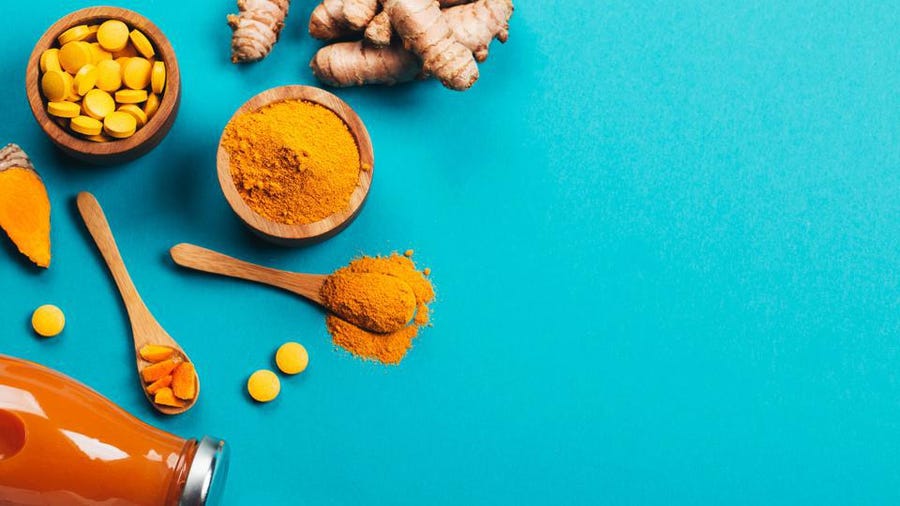Introduction
Turmeric is one of the most common spices in the world, but it’s not just for cooking. In fact, turmeric has been used as a medicine for thousands of years by Ayurvedic doctors in India. Modern science has shown that turmeric can help prevent and treat many diseases and conditions, including inflammatory bowel disease (IBD), diabetes and arthritis.
Turmeric contains an active compound called curcumin that is responsible for many of its health benefits. However, not all forms of turmeric are equally effective at delivering these benefits because curcumin doesn’t dissolve well in water or oil—and therefore isn’t easily absorbed into our bodies when consumed orally (by mouth). There are several ways to enhance absorption: taking it with black pepper extract or consuming it along with some fat source like ghee butter or coconut oil; however these preparations can sometimes have unpleasant side effects such as nausea or diarrhea due to their high concentration of tannins found naturally in this spice.”
Turmeric has been used in India for thousands of years, both as a spice and a medicine
.
In India, turmeric has been used for thousands of years as a spice and a medicine. It is also used in many parts of the world, including China and Indonesia. The use of this plant as a spice is well-known; however, its medicinal properties were only recently discovered by Western researchers.
While turmeric contains many different compounds that may contribute to its health benefits (including curcumin), it is curcumin that has been most widely studied due to its antioxidant activity.
The active ingredient in turmeric is curcumin, which has powerful anti-inflammatory effects and is a very strong antioxidant.
Turmeric is the bright yellow spice that gives curry its vibrant color. Turmeric contains an active ingredient called curcumin, which has powerful anti-inflammatory effects and is a very strong antioxidant.
Curcumin is an anti-inflammatory compound that can help reduce pain, swelling, stiffness and other symptoms of inflammation throughout your body. It’s also been shown to have many other health benefits such as improving brain function and reducing risk of heart disease and cancer.
Antioxidants are compounds that neutralize free radicals in the body by donating an electron during chemical reactions within cells (1). Free radicals are unstable molecules that cause damage when they interact with other chemicals in your body; this damage can lead to chronic diseases such as cancer or Alzheimer’s disease if left unchecked over time (2). Examples of antioxidants include vitamins C & E and beta-carotene found in brightly colored fruits like oranges or red bell peppers!
Curcumin is not well absorbed into the bloodstream. It helps to consume black pepper with it, which contains piperine, a natural substance that enhances the absorption of curcumin by 2,000%.
Piperine is the active ingredient in black pepper that enhances the absorption of curcumin by 2,000%. Piperine is an alkaloid that helps you feel fuller faster and metabolizes fat. It also reduces stress, boosts immunity and fights infections.
The best way to take turmeric or curry is with black pepper, as this has been proven to result in much higher levels of active ingredients in your blood stream than when taken alone.
Curcumin is one of the most effective anti-inflammatory compounds in existence. Inflammation plays a major role in almost every chronic Western disease.
Inflammation is a natural process that the body uses to fight infection and repair damaged tissue. Inflammation can also be a reaction to injury or irritation, such as when you sprain your ankle playing football or twist your back lifting something heavy at work. This type of inflammation usually subsides within 48 hours, but if it doesn’t go away after this time period has passed—or if the initial injury worsens over time—then there may be an underlying issue that needs treatment.
Inflammation isn’t always bad: it’s a response to an outside stimulus that helps with healing and repairing damaged joints, muscles, and organs. However, too much chronic inflammation can lead not only to pain but also other serious health problems like heart disease and cancer (1). One of the most effective anti-inflammatory compounds in existence is curcumin—a compound found in turmeric root extract known as turmeric root powder (curcuminoid)
In India, people with arthritis are treated with turmeric paste applied directly to the skin and not taken orally because it results in fewer side effects.
In India, people with arthritis are treated with turmeric paste applied directly to the skin and not taken orally because it results in fewer side effects. The reason for this is that turmeric has poor bioavailability when taken orally, meaning that it does not absorb well into your bloodstream.
However, when applied directly to the skin as a paste or mixed in with other ingredients such as coconut oil or aloe vera gel, turmeric can exert its anti-inflammatory effects on localized areas of inflammation.
Curcumin can cross the blood-brain barrier and may be helpful for treating depression.
Curcumin, the compound that gives turmeric its bright yellow colour, can cross the blood-brain barrier. It is a powerful antioxidant and anti-inflammatory, but it also has anti-aging properties that may help reduce cognitive decline with age.
Curcumin has been shown to decrease brain inflammation and oxidative stress in animal models of depression. Inflammation contributes to many diseases including those involving the gut and brain.
Turmeric should be eaten or applied to the skin rather than consumed for the most benefit with fewest side effects.
Turmeric is a powerful antioxidant and should be taken orally, applied to the skin, or both. If you are consuming turmeric as a powder or in capsule form and it doesn’t taste very good to you (or if you have any concerns about proper dosage), add it to your food with black pepper. This will increase the absorption of turmeric by 2000%.
If you would prefer not to take turmeric orally or don’t like its taste, using a carrier oil such as jojoba or coconut oil will allow you to apply it directly onto your skin without having an unpleasant flavor. The best way to do this is by mixing ½ tsp of each ingredient together in 1/4 cup of olive oil before massaging into desired areas for 15-20 minutes daily for two weeks followed by 1 week off; repeat cycle as needed until desired results are achieved
Conclusion
Turmeric is a powerful medicinal herb with a long history of use in India. It contains the active ingredient curcumin, which has been shown to have many health benefits. However, it’s not easily absorbed into the bloodstream and there are some side effects when taken orally that make turmeric more effective when applied topically or eaten rather than taken as a capsule or tablet.



